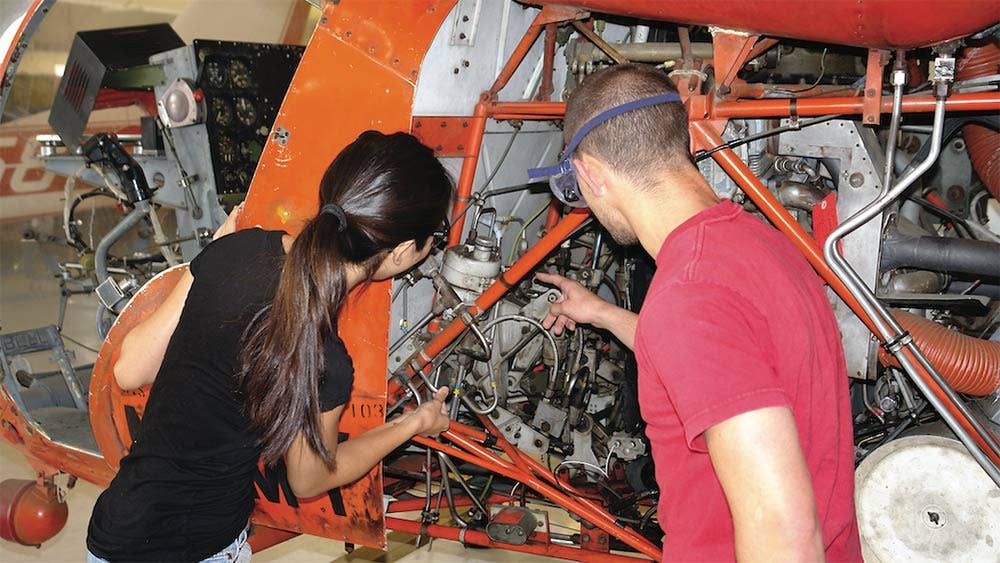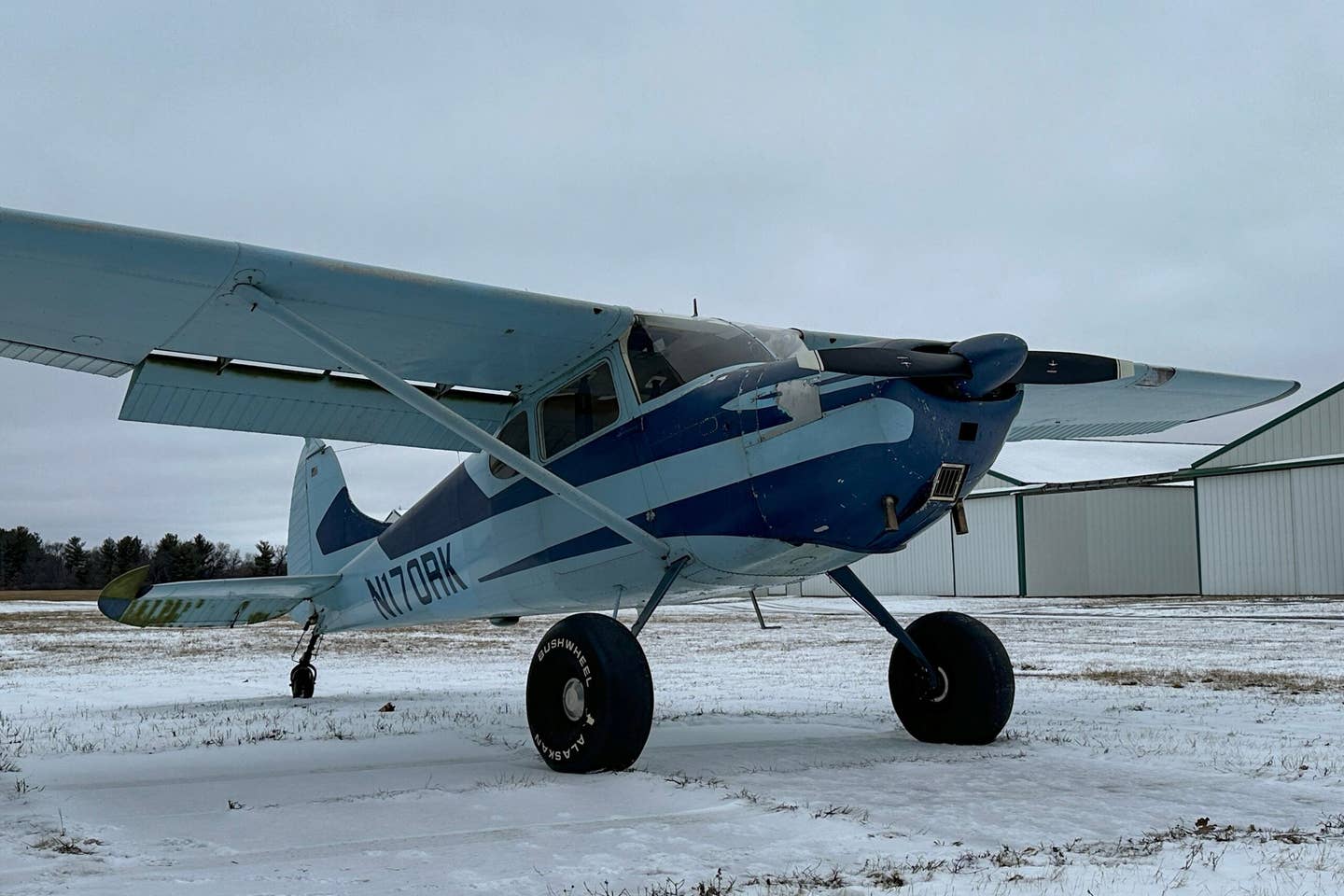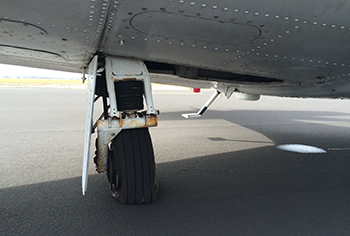Top Five A&P Mechanic Traps
Here are the things you really should not do when maintaining an airplane.

The mantra for a good tool control program is a place for every tool, every tool in its place.[Courtesy: Georgia Northwestern Technical College]
The trend of creating top five lists is all the rage these days. Being ever vigilant to stay current with the times, I did what any modern self-aware man does when he wants to know about popular culture. I asked my wife. Lisa and I were on one of our treks around Lake Peachtree kicking around ideas for my article, and she said, "Why don't you make a top five list?"
My Generation-X brain did not register top five, but David Letterman's nightly Top Ten List from the home office in Sioux City, Iowa, thrust forward from my memory like a coiled-up cobra. Maybe I could film a top 10 segment on TikTok and sling the card at the camera, piping in some glass-breaking sound effects! The top 10 most dangerous aircraft engine changes in a war zone sprang from my lips. My wife looked at me with an expression that can only be described as bewilderment.
Top Five Lists Abound
OK, top five it is. It turns out one can create a list of just about anything. I hit my new resource of choice, medium.com, and fired off a search for "best top five lists." To my amazement, page after page loaded, teeming with content, beckoning me to dive in.
One title read "The Top Five Most Useful Commands in Pandas that I use every day." To my dismay, Pandas is a data science term, not the cute and cuddly bears from Asia. And did you know that the Corr Command deals with the correlation of data and not an intergalactic mandate from Emperor Corr? ‘Tis sad but true.
After the Pandas letdown, I thought my journey into reviewing top five lists would be super dull. Still, I stumbled on and ran across My Top Five Amazing Post Apocalyptic Self Improvement Hacks You Need to Action Today. If all this goes down and the world as we know it is gone, do I need to hang around and barter for dried beans, bullets, and bottled water? I think not.
Renée Kapuku finally gave me something valuable: How to Change Your Life in 21 Days: Top Five Tips for Increased Productivity. Renée touched on one key point that resonated with me. Please write down your goal, then break it down into manageable micro-goals you can achieve in 21 days.
Tip: Never Stop Asking Questions
By now, you know this space is not about me. It is about sharing resources, swapping stories, and passing tribal knowledge to the next generation. We greybeards have a duty to shed light on the enchantment of aircraft maintenance and bring these conversations out of the corner of dark hangars. Being an A&P for 29 years taught me one thing: never to stop asking questions and don't be afraid to say, "I don't know, let's look it up."
I took to the mean streets of LinkedIn and asked a straightforward question. The one thing I would never do as an aircraft mechanic is [fill in the blank]. The following is a collection of those responses with some color commentary by yours truly. Get in, sit down, and buckle up. It's time for "The Top Five A&P Mechanic Traps"—otherwise known as things you really should not do when maintaining an airplane.
1. Assume
How do you spell assume? There is a lot of truth in that somewhat inappropriate statement. The first trap that can get you in hot water is to assume anything. If you cannot help it, assume the part is faulty until you ops check it and deem it otherwise.
Let me tell you a story about an aircraft mechanic who assumed the bolts he removed from a windshield were the approved part number, and therefore he re-installed the same ones he pulled and signed off the airplane.
The shift maintenance manager justified this omission by saying that he was quite satisfied that the bolts that he had removed were the correct bolts and that it would take so much time to find the correct numbers in the illustrated parts catalog (IPC) that he did not feel justified in using the IPC in the circumstances of the job in question.
Thankfully there were no fatalities on British Airways Flight 5390, in which that improperly installed windscreen panel separated from its frame, causing the captain to be sucked out of the aircraft. The captain has an incredible story to tell at the pub now, but I don't think it was worth it.
2. Execute a Task From Memory
Nothing causes a mechanic to swell with pride like spouting off torque values from memory as they retrieve a torque wrench from the rollaway and strut up to the task in work. Should you be impressed? Nay says the International Civil Aviation Organization (ICAO).
In 2003 the ICAO published the Human Factors Guidelines for Aircraft Maintenance manual. As a testament to the thoroughness of this study, this first edition remains the latest and greatest. Section 4 addresses “Internal Factors Influencing Performance,” specifically highlighting memory failure as a "psychological error mechanism" and contributing to the failure.
Not only is boasting about memorizing aircraft data points, measurements, and values uncouth, it is also illegal. Remember, even if time doesn't fade your memory—and it will—values vary between specific models, and sometimes manufacturers update technical data. Although rare, it does happen, and you do not want to be the one that risks your career, or another's life so that you can show off.
3. Fail To Report a Missing Tool
In February of this year, I introduced you to the concept of tool control in aircraft maintenance. You can see firsthand why I chose this topic early in this series. Without tool control, things tend to GUE, you know—get ugly early.
The mantra for a good tool control program is a place for every tool, every tool in its place.
During our tool control discussion, we addressed shadowboxing. Larger aircraft maintenance facilities companies looking to mitigate risk from lost-tool foreign object debris (FOD) enact these programs, often eliminating the need for mechanics to acquire personal tools. Toolboxes containing pre-cut foam inserts show when a tool is out of place. Before a shift ends, a quick look at the toolbox drawers ensures everything is accounted for. If a blank exists where a tool is supposed to go, stop the presses.
Perhaps the maintainers of N158WA in 2017 could have benefited from a program like this. Under a proper tool control program, the mechanic would have noticed a blank space where the screwdriver should have been and possibly returned to the aircraft before it departed. No one was injured, but the airplane sustained damage after this wayward screwdriver hit the propeller of the Swearingen Metro II during the takeoff roll in Boise.
4. Succumb To Owner or Manager Pressure
I honestly cannot believe I even need to highlight this, but here we are. Although the instances were not typical, I have been there, and the offending party and I quickly parted company. That is the beauty of owning a shop. You talk crazy, and you join my no-fly list. Do not stand for that static. Most providers are safety first—cut ties with the haters and find a good one. On the flip side, don't be that person holding up a job under the guise of safety because of a grudge. You make it harder for everyone else.
5. Falsify Aircraft Maintenance Logs/Records
OK, gang, we saved the worst for last. You guys know the drill by now. The feds’ official stance on the matter is FAR 43.12: “Maintenance records: Falsification, reproduction, or alteration.” Allow me to summarize it for you: DO NOT DO IT.
Seriously folks, if I have to explain this, or provide examples of how bad this is, then we have no hope. Everyone has heard horror stories of pencil whipping, selective inspections, and drive-by annuals. If an owner/operator ever approaches for a quote to "freshen up" a component, drop what you are doing and run for the hills.
During A&P school, I studied under Jack Moore, an absolute Jedi Master of aircraft maintenance. He was looking to procure a Beechcraft Baron and found one nearby for a reasonable price. As he reviewed the logbooks, Jack asked the seller how much total time the airframe had. The guy popped out an ink pen, clicked it open, grinned, and replied, "How much time do you want?"
Do you recognize any of these scenarios? Perhaps you have additional commentary or feel like I am way off-base. Do you have an aircraft maintenance trap to add? Drop me a line and share your experience. I promise not to tell, especially if the statute of limitations has expired.

Sign-up for newsletters & special offers!
Get the latest FLYING stories & special offers delivered directly to your inbox






